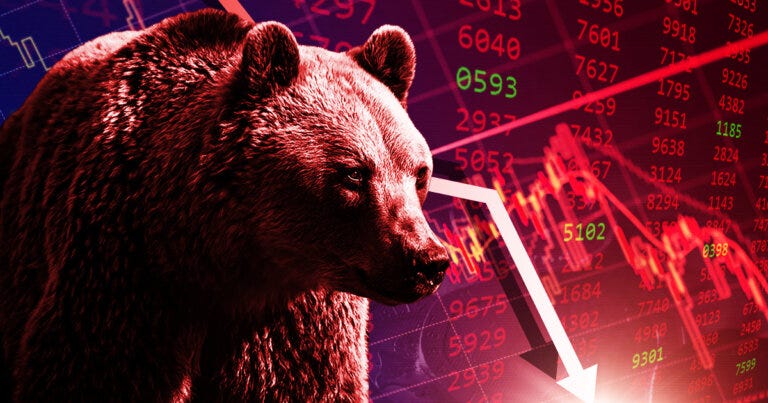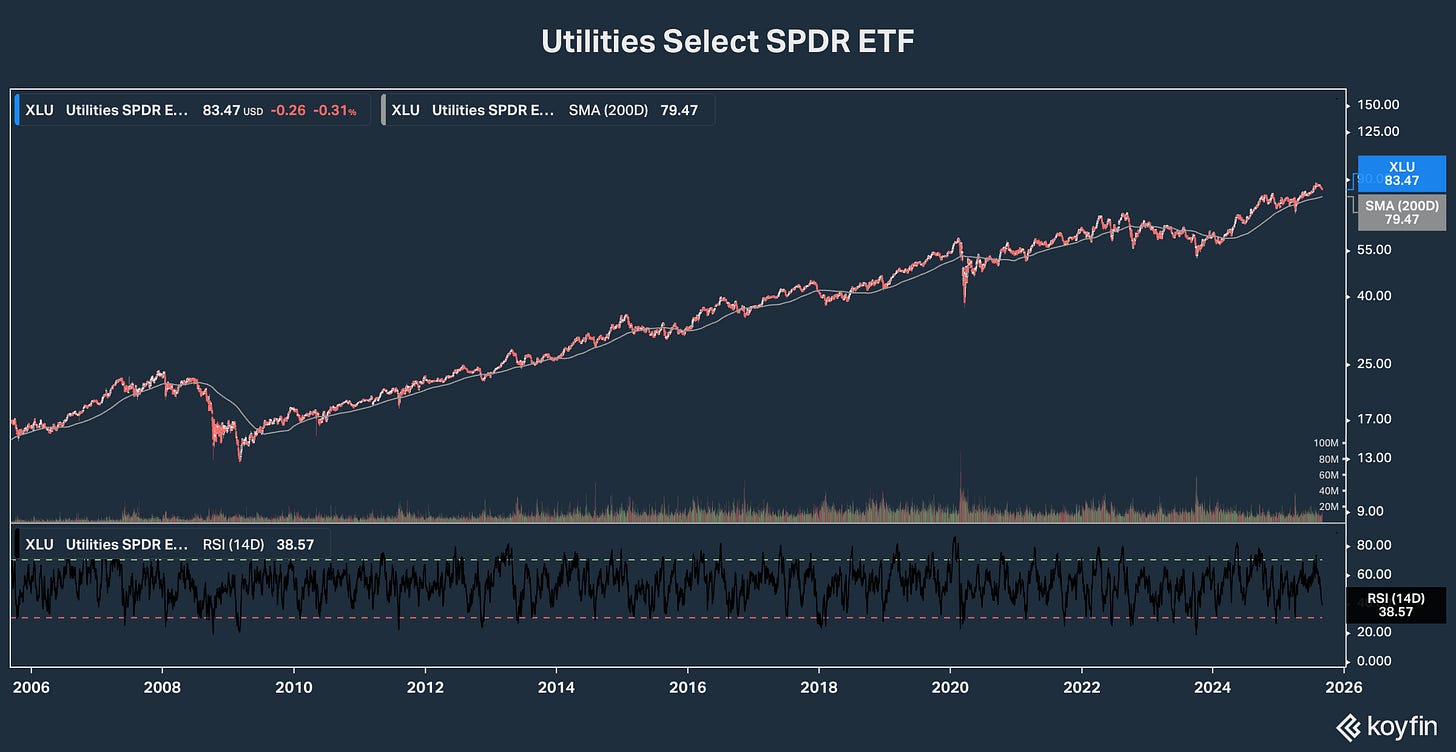Dividends: Your Best Bear Market Assurance
How you react to the inevitable downturns is as important as being prepared for them.
Editor’s note: Thank you for reading Dividends with Roger Conrad! If you’re not yet a regular subscriber, click on the link in this email. Here’s to your wealth!—RC
First, let's dispense with the idea that you can truly insure your portfolio against a bear market.
The truth is that there is no single investment that will always protect your portfolio against a legitimate bear market decline of 20% or more—other than cash. But cash won't grow. And the more you’re out of the market, the more likely you'll miss the few big days that really fuel stock market returns over the long term.
Many investors ask: "How can I stay invested in the stock market and avoid damage from a bear market decline?" The answer is that different strategies have worked at different times.
Sometimes a portfolio heavy in bonds weathered downturns well. Other times, bonds have been crushed by the same factors taking down stocks—while gold or other assets performed better. Sometimes only investment-grade bonds did well; other times, only high-yield bonds succeeded.
The bottom line is there's no perfect investment that protects against 100% of bear markets. All those "bear market insurance" products you hear about—options, various vehicles—nothing is perfect. If you put all your eggs in that basket, expecting to weather any bear market decline entirely, you're just as likely to get burned.
Why talk about a bear market now in a year that’s been very good for stocks?
One reason is simply that we really haven't had a significant stock market correction for quite a long time. We had a sharp, sudden decline in 2020 when the pandemic hit. But the damage was contained to about a month before everything bounced back quickly.
That didn’t meet the definition of a true bear market—one with both significant magnitude and duration that creates lasting psychological impact on investors.
The last time we experienced one of those confidence-undermining declines was 2007-2009 during the financial crisis. Other declines since then—2018 and more recent corrections—were swiftly reversed, reinforcing the "buy the dips" mentality.
the 2007-09 gut-wrenching experience was caused by excess in the financial system, specifically the housing market. When it hit, it caught enough people wholly off guard to result in a catastrophic stock market decline that truly gutted investors.
It's been about 17 years since that happened, which creates a serious chance of another major decline simply because we haven't experienced one recently.
Another reason to consider downmarket risk now is what may be an emerging stagflationary environment.
We're experiencing supply chain disruptions fueling inflation while the labor market weakens. Job openings are declining, and anyone looking for work will confirm it's much more difficult now. Even official statistics are showing it and they tend to lag the marketplace reality. While not the magnitude of the 1970s, this stagflation is worth noting.
Ongoing geopolitical tensions create additional uncertainty that could trigger a downturn. But probably the most compelling argument that we’re due a correction is simply the top heavy nature of this market.
Just 8 big technology stocks now comprise about 37% of the S&P 500—the primary index that most passive investing capital follows, including target funds. This is one of the most top-heavy markets in history.
These stocks aren't cheap; they're priced for perfection—actually beyond perfection. They're priced for a 10 to 20 year artificial intelligence boom. As we saw in 2000-2002 with the information technology revolution, the economy was transformed and a lot of money was made. But the leading stocks had priced all that in and more well in advance. And when they crashed it took 15 years to recover, if they ever did.
In a cycle like this one, the market prices in tremendous promise, greed takes over, and then the bubble bursts. Another good example is the green energy bubble of 2020-2021 that led to a four-year decline. Ironically, renewable energy companies are now rallying under what's arguably the most anti-renewable presidency in U.S. history—one of those unexpected market ironies.
My bet is that if the stock market crashes now, gold will be a great place to be. It was in the 1970s when the Fed cut rates to help employment while inflation spiraled.
But there's a better approach: Seeking out companies paying reliable and growing dividends.
Dividends aren't insurance against bear markets—they're assurance. Here's what I mean.
Dividends represent tangible returns regardless of market conditions. As long as the underlying company remains solid and continues growing its business, you'll receive those dividends regardless of stock price movements. That's genuine assurance.
When stock prices decline, you're still receiving cash flow into your account, whether you're living off it or reinvesting it.
If you’re reinvesting dividends, declining stock prices can set you up for windfall gains later on. That’s because you can buy more shares when prices fall.
Consider a stock trading at $20 that pays a $1 dividend. So long as the underlying company remains strong, if that stock drops to $10 (a catastrophic decline), your $1 dividend now buys twice as many shares. When the stock price recovers—which good companies' stocks do when bear markets end—you'll own significantly more shares simply because the dividend bought additional shares during the decline.
This happens automatically, without placing orders or making decisions. It's a patient strategy that enriches you considerably over time.
Quality companies that pay reliable dividends tend to be strong businesses. Investors don't sell these stocks as aggressively during bear market declines. While the S&P 500 (37% concentrated in historically expensive big tech companies) may suffer significant damage, dividend-paying stocks typically don't decline as much.
This provides genuine bear market assurance—your portfolio won't be down as much as others.
Finally, your biggest enemy in any bear market is going to be emotion. When stocks sell off, it’s unavoidable to think your portfolio and retirement are going up in smoke. And scared investors make bad decisions.
It’s also easier than ever to act on fearful decisions now. A skilled broker or experienced advisor might talk you out of bad decisions. But if you’re doing everything on your own, it can be difficult to overcome emotional responses. Every account comes with the ability to shift everything to cash with a button click. And it’s all to easy to lock in catastrophic losses—a decision you'll likely regret.
Back in March 2009, I spent a great deal of time trying to talk people out of selling everything. For many, a two-year decline that left good stocks down 50% was just too much to take. Why? Fear.
Your emotions will be your worst enemy when stocks decline, just as they are when stocks rise and you're tempted to pile into rising investments.
Bear market assurance—that's what dividend stocks offer. Not just any dividend stocks or the highest-yielding stocks, but companies able to sustain and continue paying dividends over time.
If you stick with good dividend-paying stocks through a bear market decline, you'll be made whole because those stocks will recover. It's always darkest before the dawn—your emotions will be worst right at the market bottom when bearish sentiment is thickest after everyone has lost money and fears losing more.
But seeing those dividends flow into your account is invaluable assurance that you're still on the right track.
Bear markets are part of investing life. It's been a long time since we've had a real one. And that alone suggests we’re due. Dividend-paying stocks offer the best assurance for navigating that challenge successfully.




